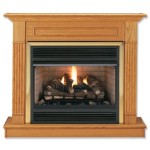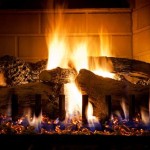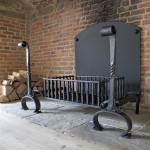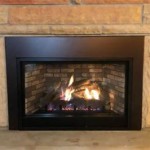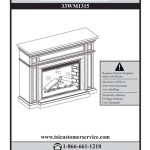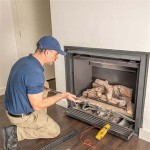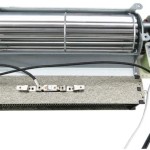Fireplace Inserts: Enhancing Efficiency and Aesthetics
Fireplace inserts represent a significant upgrade from traditional open fireplaces, offering improved heating efficiency, enhanced safety, and a variety of aesthetic options. These self-contained units are designed to fit directly into an existing fireplace opening, transforming a potentially inefficient and drafty feature into a powerful and controllable heat source. The following article delves into the core aspects of fireplace inserts, exploring their benefits, types, installation considerations, and maintenance requirements.
A traditional open fireplace, while visually appealing, suffers from inherent inefficiencies. A substantial portion of the heat generated is lost up the chimney, often exceeding 90% in some cases. This results in minimal warmth radiating into the room and can even contribute to heat loss from the rest of the house as the fireplace draws in cold air to fuel the fire and draw it up the chimney. Fireplace inserts directly address this issue by creating a closed combustion system, maximizing heat output and minimizing heat loss.
Furthermore, open fireplaces pose certain safety risks. Embers can escape and ignite nearby materials, and the open flue can allow drafts and pests to enter the home. Fireplace inserts mitigate these risks through their controlled combustion process and secure installation.
Key Benefits of Installing a Fireplace Insert
The adoption of a fireplace insert brings numerous advantages over traditional open fireplaces. Understanding these benefits is crucial in making an informed decision about upgrading a home heating system.
Enhanced Heating Efficiency: This is arguably the most compelling advantage. Fireplace inserts are designed to maximize heat output by controlling airflow and combustion. The closed system prevents heat from escaping up the chimney, allowing it to radiate directly into the room. Many inserts boast efficiency ratings exceeding 70%, a stark contrast to the single-digit efficiency of many open fireplaces. This improved efficiency translates directly to lower heating costs and a more comfortable home environment. Heat is distributed more evenly, eliminating cold spots and providing consistent warmth throughout the room.
Improved Safety: Fireplace inserts significantly reduce the risk of fire hazards. The closed combustion chamber contains embers and sparks, preventing them from escaping and igniting nearby flammable materials. Many models also feature safety glass doors that further contain the fire and prevent accidental contact. Additionally, the controlled combustion process reduces the buildup of creosote in the chimney, minimizing the risk of chimney fires. The airtight design also prevents backdrafts, which can release harmful gases into the home.
Greater Control and Convenience: Unlike open fireplaces, fireplace inserts offer greater control over the heating process. Many models feature adjustable airflow controls that allow the regulation of the burn rate and heat output. Some inserts also incorporate thermostats and automatic blowers that maintain a consistent temperature. This level of control ensures optimal comfort and allows for efficient fuel consumption. Furthermore, inserts require less frequent tending compared to open fireplaces, reducing the need for constant monitoring and adding fuel.
Aesthetic Versatility: Fireplace inserts are available in a wide range of styles, materials, and finishes to complement any home décor. From traditional cast iron designs to modern stainless steel models, there is an insert to suit every taste. The viewing area, often featuring a large glass door, provides a clear view of the fire, enhancing the ambiance of the room. Fireplace inserts can transform a dated or unappealing fireplace into a stylish and functional focal point.
Types of Fireplace Inserts
Fireplace inserts are categorized primarily by the type of fuel they burn. Each type offers distinct advantages and disadvantages in terms of heating efficiency, cost, and environmental impact.
Wood-Burning Inserts: Wood-burning inserts are a popular choice for homeowners seeking a traditional heating experience. These inserts burn seasoned firewood and offer high heat output. Modern wood-burning inserts are designed for cleaner and more efficient combustion compared to older models. They often incorporate features such as catalytic converters or non-catalytic combustion systems to reduce emissions and improve efficiency. However, wood-burning inserts require a consistent supply of firewood and regular maintenance, including ash removal and chimney cleaning.
Gas Inserts: Gas inserts offer convenience and ease of use. They burn either natural gas or propane and can be easily ignited and controlled with a thermostat or remote. Gas inserts produce consistent heat and require minimal maintenance. They are also cleaner-burning than wood-burning inserts, producing fewer emissions. However, gas inserts typically have lower heat output compared to wood-burning models, and they rely on a gas supply, which may be subject to price fluctuations.
Electric Inserts: Electric fireplace inserts offer a clean and convenient heating solution. They require no venting or chimney and can be easily installed in virtually any fireplace opening. Electric inserts produce heat using electric coils or infrared technology and can be controlled with a thermostat. They offer a realistic flame effect, often with adjustable brightness and color settings. However, electric inserts typically provide less heat compared to wood or gas inserts and consume electricity, which can increase energy bills.
Pellet Inserts: Pellet inserts burn compressed wood pellets, which are a renewable and relatively clean-burning fuel. Pellet inserts offer high heat output and efficient combustion. They typically feature automatic feeders that deliver pellets to the firebox, requiring less frequent refueling compared to wood-burning inserts. Pellet inserts also produce less ash compared to wood-burning models. However, pellet inserts require a reliable supply of wood pellets and may require more maintenance than gas or electric inserts.
Installation and Maintenance Considerations
Proper installation and maintenance are essential for ensuring the safe and efficient operation of a fireplace insert.
Professional Installation: While some homeowners may be tempted to install a fireplace insert themselves, professional installation is highly recommended. A qualified technician can ensure that the insert is properly sized for the fireplace opening, that the venting system is correctly installed, and that all safety regulations are met. Professional installation can also help to avoid potential problems such as carbon monoxide leaks or chimney fires.
Venting Requirements: The venting system is a critical component of a fireplace insert. Wood-burning and pellet inserts typically require a dedicated chimney liner to ensure proper draft and prevent the buildup of creosote. Gas inserts may require a direct vent system or a B-vent system, depending on the model and local building codes. It is essential to consult with a qualified technician to determine the appropriate venting system for the specific insert being installed and ensure that it complies with all applicable regulations.
Regular Maintenance: Regular maintenance is crucial for maintaining the efficiency and safety of a fireplace insert. Wood-burning and pellet inserts require regular ash removal and chimney cleaning to prevent creosote buildup. Gas inserts should be inspected annually by a qualified technician to ensure that the gas lines are leak-free and that the burner is functioning properly. Electric inserts may require periodic cleaning of the heating elements and flame effect components.
Sizing and Placement: The size of the fireplace insert should be appropriate for the size of the room it is intended to heat. An undersized insert will not provide adequate heat, while an oversized insert may overheat the room and waste fuel. It is also important to consider the placement of the insert within the room to ensure optimal heat distribution. The insert should be positioned in a location that allows for unobstructed airflow and maximizes the radiant heat output.
In conclusion, fireplace inserts offer a significant improvement over traditional open fireplaces in terms of efficiency, safety, and aesthetics. By carefully considering the type of insert, installation requirements, and maintenance needs, homeowners can enjoy the benefits of a warm, comfortable, and visually appealing heating system.

Fireplace Insert Guide Fireplaces Direct Learning Center

Fireplace Insert Installation Wood Inserts Gas Pellet And Electric

Wood Burning Fireplace Inserts Insert Installation

Lopi Premium Wood Fireplace Inserts Custom Hearth Fireplaces And Stoves

Ventis Hei240 Wood Burning Insert

What S Best A Fireplace Stove Or Insert We Love Fire

Wood Inserts We Love Fire

Why A Wood Burning Fireplace Insert Bethesda Md Service

T25i Timberwolf Wood Fireplace Insert Hearth Stove Patio

Rais 60 Insert Wood Fireplace For

